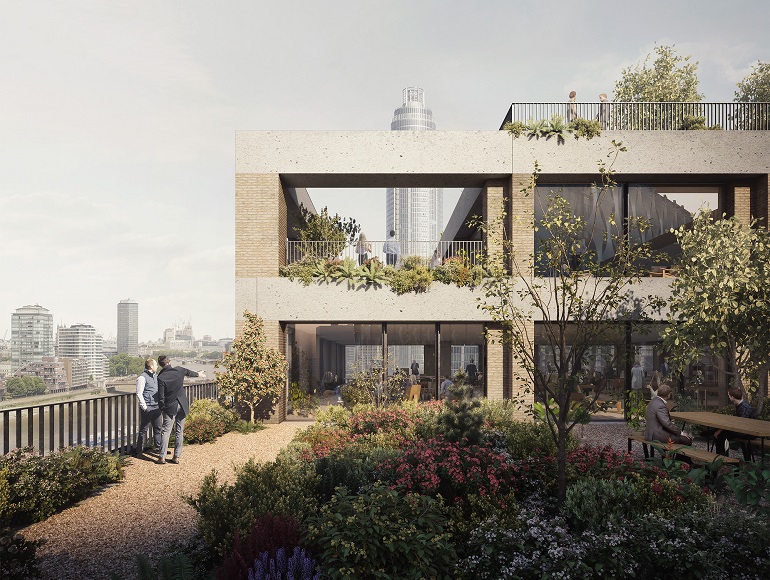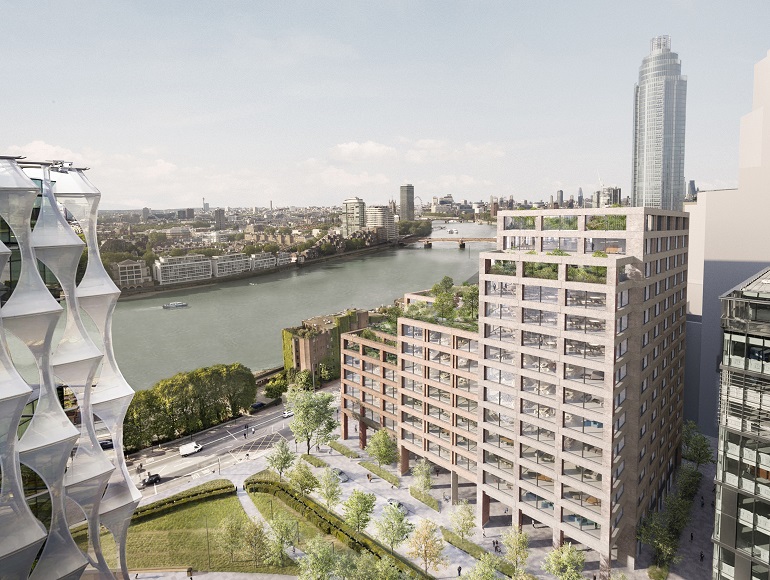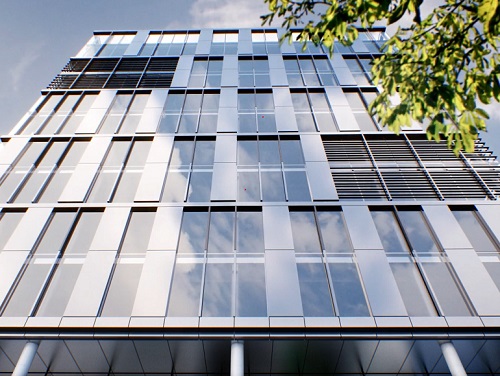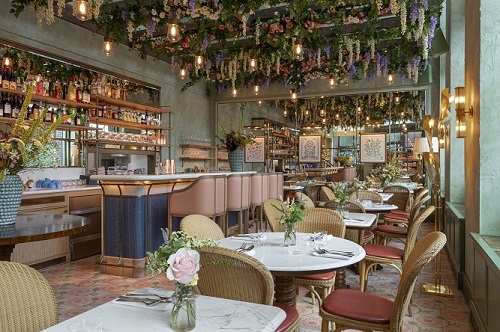Ballymores EG:HQ points to a brighter future for the workspace
As we emerge from lockdown, cities are having to establish a new normal to allow offices, schools, shops and other services to continue to operate. That has led to calls to not only incorporate basic social distancing measures but to go further and ‘build back better’, creating more sustainable and better places to work, live or visit.
This could be a priority for city office buildings, where large open-plan spaces and hot desking have been the norm. During lockdown, businesses replacing office operations with working from home gained an understanding of both the pluses and the minuses of the latter. Frequent distractions, especially from small children, poor WiFi signals, physical isolation and lack of defined space for a desk are just some of the downsides that have already become apparent. Such factors are likely to mean businesses remain office-based, where they will look to physical distancing measures to help them work as effectively and safely as possible.
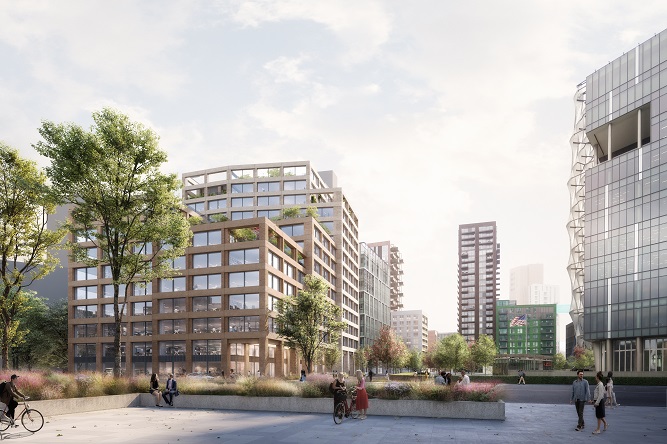
Ballymore’s upcoming EG:HQ building, beside the River Thames in London’s rapidly emerging Nine Elms district, points to a different future for the office building. Far in advance of the pandemic, people-centred and sustainable approaches were set at the heart of the design of this 217,000 sq ft building.
Joe Morris, founder of Morris + Company, EG:HQ’s architect, says shortcomings in the conventional office were apparent long ago. “There was already a perception that the 9-to-5 is not creative or productive for workers. There is a challenge in how we tackle issues around the balance of work and life, productivity and creativity.”
The pandemic has focused attention, with that potential to build back better. “A crisis makes you appreciate life - you realise how important the sunlight is, for example,” he says, adding, “The question is: how can the office of the future tap into that?”
EG:HQ provides an answer to that, its design advocating what Morris calls an ‘office+’ approach. “We thought about how to bring value with amenity, landscape, views and natural light and how to reduce the corporate security barrier to make the entrance experience meaningful and give a more public-centric and creative environment. As a step forward, EG:HQ has a lot going for it.”
This value is evident in numerous aspects of the building’s design. Instead of a single rooftop terrace, the design incorporates seven terraces, both public and private, over numerous floors. In all, the building has more than 18,000 sq ft of terracing, providing views of and ready access to outdoor space and landscaping.
Windows run horizontally, rather than vertically, which promotes wellbeing, explains Morris. “Wellbeing can be something as simple as being able to look away from a computer screen, out of a window and take in a long view. EG:HQ was designed to promote that. The horizontal windows give you long views across rooftops and are enhanced by landscape.”
The building’s users were prioritised right from the start of the project. “Wellbeing was part of Ballymore’s initial brief to us,” says Morris. Some of EG:HQ’s attributes have become even more relevant to wellbeing, as a result of the COVID-19 outbreak. The riverside location can allow for a pleasant walk, jog or cycle to work, and the building has generous cycle storage. Two separate lift cores offer the option of managed circulation, limited density in the lift cars or the alternative of stair access to floors. The building also has separate toilets in each of the two circulation cores, again offering choice and separation.
Flexibility of space could be key in successfully accommodating workers in offices in the future, believes Michael Hughes, project director for EG:HQ at Ballymore. “Offices will need to offer better facilities and be more flexible to workers if they are to attract talent. High density occupation, hot desking, single core access and so on, can cause unwelcome stress to employees.”
Hughes expects to see more employers focusing on new and better ways of working. “The experience offered by the office will change to benefit the worker, from the touch free journey from the front door to the desk and the amenities offered to those employees spurning public transport in exchange for walking, running and cycling to work.” Such factors could transform the workspace, which, in spite of recent reports predicting its demise, will endure, says Hughes. “Companies will still need a base and will still demand the collaboration of the office-based community.”

